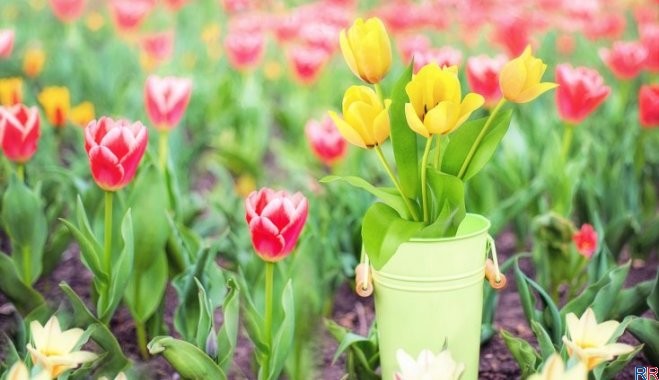 Tulips are one of the most unpretentious flowers. They delight in their color from the first spring days. One of the basic principles of care is a bulb transplant. Some varieties require such a procedure annually, and some are enough to transplant every few years.
Tulips are one of the most unpretentious flowers. They delight in their color from the first spring days. One of the basic principles of care is a bulb transplant. Some varieties require such a procedure annually, and some are enough to transplant every few years.
Consider when to dig out tulips after flowering and when to plant them, as well as how to do it correctly.
Content
When to dig out tulips
Tulips are planted only with bulbs. There is a method of propagation by seeds, but it is also from them that the bulbs are grown. You can get good quality tulip seeds here - florasad-agro.com.ua.
You can understand that the bush is ready for excavation by the color of the aerial parts. It should turn yellow by about half. It is very important that the stems and leaves do not begin to dry. Many are waiting for this very moment, but in this case the bulbs will not be so full of energy, and it will be much more difficult to find them.
Bulbs are dug, dried and laid out for storage in mid-June-early August. The timing depends on the variety and weather conditions, we have already said how to determine that a tulip is ready for transplanting.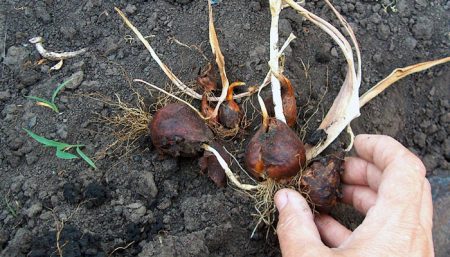
If you have parrot, fringed, green and other valuable varieties of tulips in your flowerbed, you need to dig them up every year. Differently from year to year their distinctive features will worsen. Simple early and late, as well as Kaufmann, Greig, Foster, Triumph and a variety of hybrids can be transplanted every three to six years.
According to the lunar calendar, for excavation in 2018, 15.06.16.06.07.07.07.17.17.18.07 and 31.07 are ideally suited.
How to dig and store tulips after digging
It is recommended to dig out tulip bulbs in dry sunny weather in the morning. The hole must be made wider to get not only strong bulbs, but also small "children". Do not throw them away. A little effort and you can get great planting material out of them.
If the nights are hot, then the bulbs can be left in the beds until the next morning, if not, then it is better to collect them in the evening, sort them and put them in a well-ventilated shed, or at least under a canopy.
After about three to five days, the bulbs should be cleaned of old scales, roots and cut off the remaining soil, and sorted. Bulbs with light brown scales are considered healthy, dense, even, without damage, stains, rot and other defects.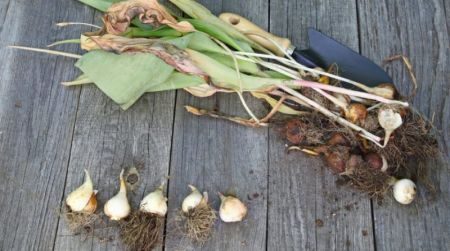
For storage, tulips are laid out in one layer. So they will lie for about 20 days. The optimum temperature is +23 and humidity is about 80%. Such conditions contribute to the formation of a strong flower shoot, leaves and root system.
At low temperatures, this will not happen, and the plant will either die or become so weak that it will not bloom for several years in a row. Therefore, it is not necessary to remove the bulbs in the cellar or pantry.
As the landing time approaches, it is better to lower the temperature to +15, and humidity to 70%. So the bulbs will pass the natural hardening.
When to plant tulips
Small onion-children should be planted in warm soil. This happens around the beginning of August and beginning of September, depending on the climate.
But adults should not take root. For normal development and flowering, they must winter in the ground. This happens in late September and early November. It is allowed that the ground above was slightly frozen. The main thing is that at a depth of 15 cm it should be no colder than 10 degrees.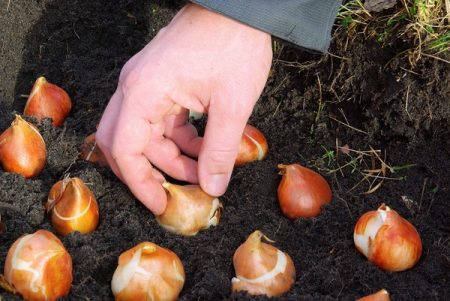
How to plant tulips
It is advisable to place the flowerbed for tulips in a well-lit place. The soil should be fertile and fairly loose. It does not hurt to pre-fertilize it with humus.
Before each planting, peel each bulb from the old husk, dip into a saturated pink solution of potassium permanganate.
Dig a hole to a depth of 15 cm, pour eggshells on the bottom for drainage, sand on top. Remove the onion from potassium permanganate, roll in wood ash and place in the hole. Sprinkle gently on top with earth. Regarding the distance between the holes, one should take into account the recommendations for growing this variety, but most often it is 20-40 cm.
After two weeks, it is necessary to irrigate with warm water. And two weeks later, you can fill the flower bed with sawdust, fallen leaves or peat. Shelter will also serve as additional fertilizer, just remember to gently clear the place around the sprouting tulips in the spring.
Everyone who plans to have a tulip transplant this year will give one more tip. This flower, although it is mainly propagated by bulbs, spends a lot of its energy on the formation of seeds. For planting material to be powerful, do not deprive yourself of the beautiful sight of blooming tulips. It is enough on the third or fifth day after opening the flower to carefully remove the flower head. This will not affect the flowering period in any way, but the bulb will receive several times more strength and energy.
And if you cut tulips into a bouquet, leave at least three leaves on the stem. It also affects bulb formation.
Take note of our simple tips and let the tulips in your flowerbed be the most beautiful!

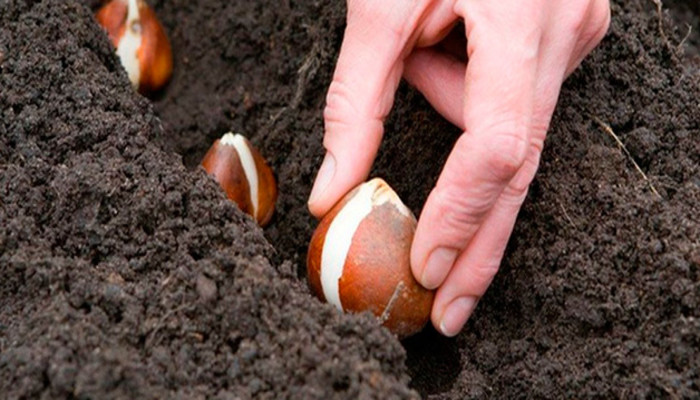
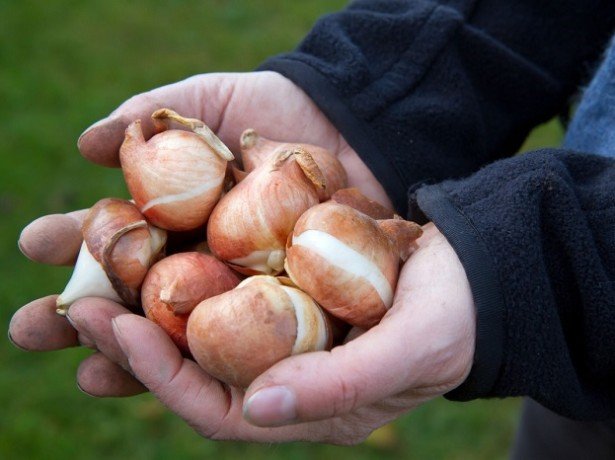
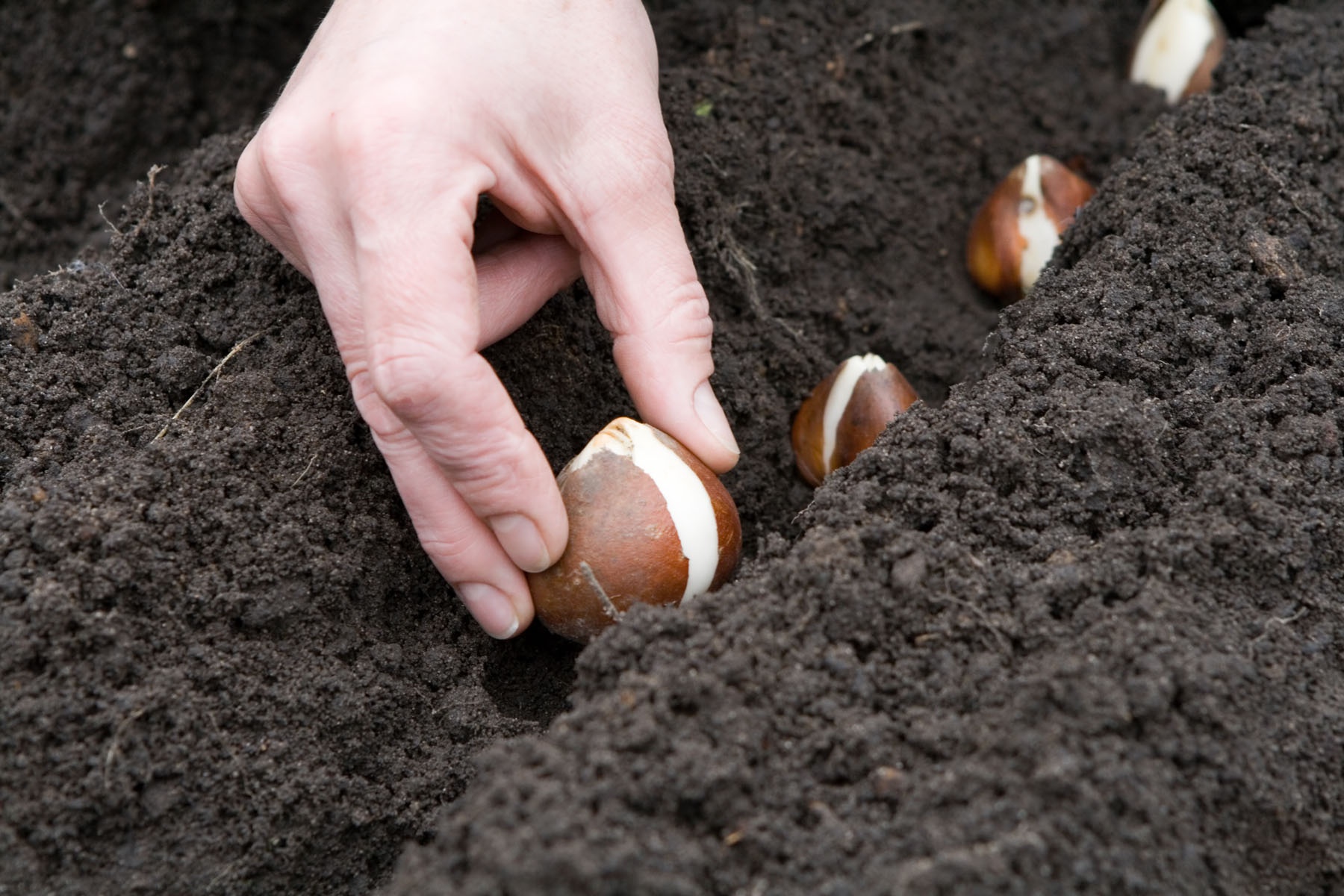
 When and how to plant tulips in autumn in the open ground
When and how to plant tulips in autumn in the open ground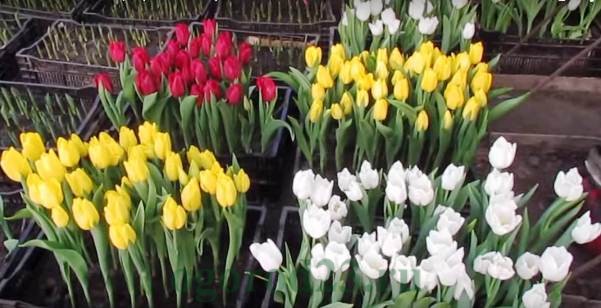 We plant tulips at home on March 8
We plant tulips at home on March 8 How to save tulip bulbs after flowering until next spring
How to save tulip bulbs after flowering until next spring
Thank you, very valuable information, did not know much.
Thank you very much! Just started to deal with flowers, and your advice is exhaustive and very useful.